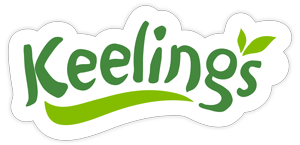How to make a more plant-based Christmas!
There’s a lot of chat around following a more plant-based diet, which we know promotes health and immunity. But what exactly is a plant-based diet? Ask yourself what it means to you. For some, it may mean a vegan diet, but for others, it may mean including more fruits, vegetables, and plant-based proteins in their diet. There is no set definition of a plant-based diet, and for many, it may mean a flexitarian diet.
A flexitarian diet can be described as a flexible vegetarian diet, or a dietary approach that results in us eating less meat and increasing our intakes of plant-based proteins. I like to look at it as a diet that encourages you to add new foods into your diet that can be greatly beneficial to your health. Essentially, a flexitarian diet is higher in fruits and vegetables, whole-grains, nuts, legumes (beans, peas & lentils) and contains fewer animal products. It is a dietary approach that is becoming increasingly popular as we look towards sustainability and managing our health. One way of approaching it is to start having vegetarian meals a couple of nights each week. Another approach could be to reduce how much meat you use in your dishes and include some lentils, beans, or pulses with your dish as another protein source.
Traditionally, Christmas Day might be a little bit of a meat feast, but why not find a healthier approach that suits all the family this year! Here are some ways to make a festive dinner a little healthier, without losing the essence of Christmas.
- Let’s begin with breakfast. Rather than starting with a full Irish breakfast, why not cook some mushrooms and tomatoes to have with eggs or beans? Or, you could try cinnamon porridge with stewed cranberries. Yum!
- Try a fruit-based starter or perhaps vegetable soup instead of a fish- or meat-based starter. Perhaps a mushroom pate or tapenade served with melba toast. Often, a lighter starter is a better idea before the main event!
- Go easy when ordering the turkey and ham! Think of how much you actually need and how much is left over every year; we only need about 100-120g per person.
- Make stuffing without sausage meat.
- Why not try a nut roast that will suit the vegan of the house but serve as a stuffing for everyone else?
- Serve extra vegetables and try adding some herbs to add a little extra flavour. For example, add some almonds to your red cabbage or roasted chickpeas with the Brussels sprouts. Bulk up the vegetables to fill us with healthy calories.
- Of course, we can finish with some plum pudding!
With a little planning, the family can enjoy a more plant-based dinner without really noticing. Little changes can help our health and environment!



